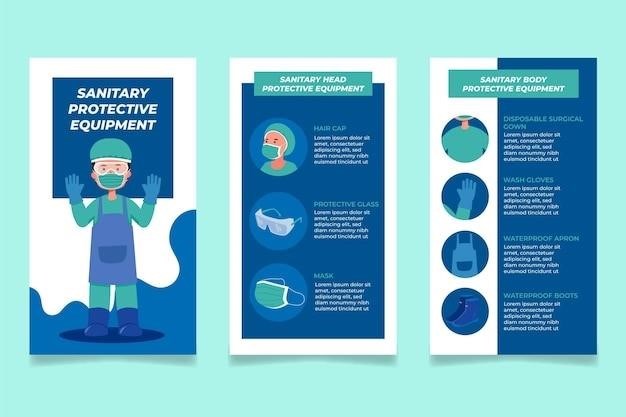Brother LS2125 Sewing Machine⁚ A Comprehensive Guide
This guide provides a comprehensive overview of the Brother LS2125 sewing machine, covering its features, setup, basic operation, essential techniques, troubleshooting, maintenance, and more. Whether you’re a beginner or an experienced sewer, this guide will help you get the most out of your LS2125.
Introduction
The Brother LS2125 is a versatile and user-friendly sewing machine designed for both beginners and experienced sewers. It boasts a range of features that make it suitable for a variety of sewing projects, from simple repairs to intricate crafts. This comprehensive guide will walk you through the essential steps of setting up, operating, and maintaining your Brother LS2125, ensuring you have a smooth and enjoyable sewing experience.
Key Features of the Brother LS2125
The Brother LS2125 is packed with features that make it a great choice for both beginners and experienced sewers. Some of its key features include⁚
- Built-in stitch options⁚ The LS2125 offers a variety of basic stitches, including straight stitch, zigzag stitch, and buttonhole stitch, allowing you to tackle a wide range of sewing projects.
- Easy-to-use controls⁚ The machine features simple and intuitive controls, making it easy to adjust stitch length, width, and tension.
- Free arm⁚ The free arm feature allows you to sew sleeves, cuffs, and other small items with ease.
- Automatic bobbin winding⁚ The automatic bobbin winding system makes it easy to wind bobbins without having to manually adjust the tension.
- Drop-in bobbin⁚ The drop-in bobbin system makes it easy to insert and remove bobbins.
These features, combined with its lightweight and compact design, make the Brother LS2125 a great choice for both home and travel sewing.
Setting Up Your Brother LS2125
Before you can start sewing, you need to set up your Brother LS2125. This involves unboxing the machine, assembling it, and threading the needle and bobbin. Here’s a step-by-step guide to help you get started⁚
- Unboxing and Assembly⁚ Carefully remove the sewing machine from its packaging and identify all the included components. Assemble the machine following the instructions provided in the user manual. This may involve attaching the foot pedal, connecting the power cord, and adjusting the sewing table.
- Threading the Machine⁚ Locate the thread guide on the top of the machine and follow the threading path indicated in the manual. This usually involves guiding the thread through a series of guides and tension discs before finally attaching it to the needle.
- Winding the Bobbin⁚ Use the automatic bobbin winding system to wind a bobbin with thread. Place the bobbin on the winding spindle and follow the instructions in the manual to start the winding process.
Once you’ve completed these steps, you’re ready to start sewing.
Unboxing and Assembly
The first step to using your Brother LS2125 sewing machine is to unpack it and assemble it correctly. This process is straightforward and should only take a few minutes. Start by carefully opening the box and ensuring all the components are present. You should find the sewing machine itself, the foot pedal, the power cord, the user manual, and possibly some additional accessories.
Next, locate the instructions in the user manual for assembling the machine. These instructions will guide you through connecting the foot pedal and power cord, as well as any other necessary adjustments or attachments. The assembly process typically involves simply plugging in the power cord, connecting the foot pedal, and potentially adjusting the sewing table to a comfortable height.
Once you’ve assembled the machine, you’re ready to start threading and winding the bobbin.
Threading the Machine
Threading your Brother LS2125 sewing machine is a crucial step before you can start sewing. The process is simple and involves guiding the thread through a series of guides and tension disks. Start by opening the thread guide cover and threading the thread through the guide. Next, wind the thread around the spool pin and then through the tension disks. Ensure the thread is smoothly engaged with each component, avoiding any tangles or knots.
After passing through the tension disks, the thread goes through the needle clamp and then through the needle. The needle clamp holds the thread securely in place as it passes through the needle. Make sure the thread goes through the needle from front to back, ensuring it’s correctly positioned.
Once you’ve threaded the needle, you’re ready to wind the bobbin.
Winding the Bobbin
Winding the bobbin with thread is a necessary step before you can start sewing. It provides the bottom thread that interacts with the top thread to create a stitch. Begin by placing a bobbin on the bobbin winder spindle and threading the bobbin winder. The bobbin winder is usually a small, separate unit that attaches to the machine.
After threading the bobbin winder, press the bobbin winder button and hold it down. The bobbin winder will begin rotating, winding the thread onto the bobbin. Keep an eye on the bobbin as it fills with thread and stop the winder before the bobbin is completely full.
Once the bobbin is wound, remove it from the winder and insert it into the bobbin case. The bobbin case holds the bobbin in place under the sewing needle.
Sewing Basics with the Brother LS2125
The Brother LS2125 is designed for ease of use, making it perfect for beginners. It features a simple interface and a limited selection of stitches, focusing on essential sewing tasks. Start by understanding the basic controls. The foot pedal controls the sewing speed. The stitch selection dial allows you to choose between different stitch patterns, like straight stitch, zigzag stitch, and buttonholes.
Before you begin sewing, practice on a scrap of fabric to get a feel for the machine. Adjust the stitch length and width to suit your project. The LS2125 offers adjustable stitch length and width to create different stitch effects.
Once you’ve mastered the basics, you can move on to more advanced techniques. Remember, practice is key.
Choosing the Right Needle and Thread
Selecting the appropriate needle and thread is crucial for successful sewing. The Brother LS2125 is compatible with standard sewing needles, available in a variety of sizes and types. The size of the needle you choose will depend on the type of fabric you are sewing. For example, a thinner needle is typically used for delicate fabrics, while a thicker needle is better for heavier fabrics.
The type of needle is also important. For example, a universal needle is a good all-around choice, while a ballpoint needle is better for knit fabrics. When it comes to thread, the LS2125 can use both standard and all-purpose thread.
Choose a thread that matches the weight and color of your fabric. For best results, use a thread that is compatible with the needle you have selected.
Adjusting Stitch Length and Width
The Brother LS2125 offers adjustable stitch length and width, allowing you to customize your stitches for different sewing projects. The stitch length controls the spacing between individual stitches, while the stitch width determines the width of zigzag stitches. You can adjust the stitch length by turning the dial located on the front of the machine.
The stitch width can be adjusted by turning the dial located on the side of the machine. The LS2125 also has a built-in stitch selector, which allows you to choose from a variety of different stitch patterns, including straight stitch, zigzag stitch, and buttonhole stitch.
Experiment with different stitch lengths and widths to find the settings that work best for your projects. Refer to your LS2125 instruction manual for detailed instructions on adjusting stitch length and width.
Using the Foot Pedal
The foot pedal is an essential part of the Brother LS2125 sewing machine, providing you with precise control over the sewing speed. It allows you to start and stop the machine smoothly, and it helps you to sew at varying speeds depending on the project and your desired stitch quality.
To use the foot pedal, simply connect it to the machine using the provided cord. Place the foot pedal on the floor and position it comfortably beneath your foot. To start sewing, press down on the foot pedal gently. The harder you press, the faster the machine will sew. To stop sewing, release the foot pedal.
The foot pedal is designed to provide you with a seamless and intuitive sewing experience. It is a valuable tool for both beginners and experienced sewers, as it allows you to control the sewing speed and to adjust it as needed to achieve the best possible results.
Essential Sewing Techniques
The Brother LS2125 sewing machine is capable of a variety of sewing techniques, allowing you to create a wide range of projects. Mastering these techniques will expand your sewing abilities and enable you to confidently tackle more complex projects.
This section will introduce you to some essential sewing techniques that can be performed using the LS2125. You will learn how to create straight stitches, zigzag stitches, and buttonholes, which are fundamental techniques for many sewing projects.
As you practice these techniques, you will gain a deeper understanding of the machine’s capabilities and learn how to adjust settings to achieve the desired results. Remember that practice is key to mastering any sewing technique.

Straight Stitching
Straight stitching is the most basic and versatile stitch used in sewing. It is used to join fabric pieces together, create seams, and reinforce edges. The Brother LS2125 offers a variety of straight stitch options, including different stitch lengths and widths.
To create a straight stitch, select the straight stitch setting on your machine and adjust the stitch length to your desired setting. Ensure that your needle is properly threaded and that the bobbin is wound. Place your fabric under the presser foot and lower it. Start sewing slowly and gradually increase your speed as you become more comfortable.
When sewing straight stitches, it is important to maintain a consistent speed and to keep your fabric taut. This will help you avoid puckering or uneven stitches. Practice straight stitching on scrap fabric before starting your project to get a feel for the machine and ensure that you are getting the desired results.
Zigzag Stitching
Zigzag stitching is a versatile stitch that is used for a variety of purposes, including finishing edges, securing seams, and creating decorative designs. The Brother LS2125 features a zigzag stitch setting that allows you to adjust the stitch width and length to create different looks.
To create a zigzag stitch, select the zigzag stitch setting on your machine and adjust the stitch width and length to your desired settings. You can also use the stitch width dial to adjust the width of the stitch. Place your fabric under the presser foot and lower it. Start sewing slowly and gradually increase your speed as you become more comfortable.
Zigzag stitching can be used to finish edges by creating a decorative stitch that prevents fraying. It can also be used to secure seams by creating a more secure stitch than a straight stitch. You can also create decorative designs by adjusting the stitch width and length and using different colors of thread.
Buttonholes
The Brother LS2125 sewing machine comes equipped with a built-in buttonhole feature, making it simple to create professional-looking buttonholes for your garments. This feature allows you to create buttonholes of various sizes, ensuring a perfect fit for your buttons.
To create a buttonhole, select the buttonhole setting on your machine and adjust the buttonhole length and width to match the size of your button. It’s advisable to practice on a scrap fabric before attempting on your garment. Place the fabric under the presser foot, ensuring the buttonhole marking lines are aligned correctly.
The machine will automatically sew the buttonhole, creating a neat and precise opening. Once the buttonhole is complete, carefully cut the buttonhole opening using a seam ripper or small scissors to avoid damaging the stitching. Remember to check the buttonhole size before cutting to ensure it fits your button perfectly.
Troubleshooting Common Issues
While the Brother LS2125 sewing machine is generally reliable, occasional problems can arise. Understanding common issues and their solutions can help you troubleshoot effectively and get back to sewing. Here are some of the most frequent issues and their possible causes and fixes⁚
- Thread Jamming⁚ This can be caused by incorrect threading, a tangled bobbin, or a buildup of lint in the bobbin area. Check your threading steps, ensure the bobbin is wound correctly, and clean the bobbin area regularly.
- Needle Breakage⁚ Using the wrong needle type or size for your fabric, or a bent needle, can cause breakage. Always choose the appropriate needle for the fabric you’re using and inspect the needle for any damage before sewing.
- Uneven Stitching⁚ This can be due to incorrect tension settings, a faulty bobbin, or a dirty feed dog. Adjust your tension settings, check the bobbin for damage, and clean the feed dog regularly.
If you encounter any persistent issues, refer to the user manual for detailed troubleshooting instructions. Remember, a well-maintained sewing machine is less prone to problems.
Thread Jamming
Thread jamming is a common issue that can occur with any sewing machine, and the Brother LS2125 is no exception; This frustrating problem can be caused by several factors, but understanding the root cause can help you quickly resolve it. Here are some of the most frequent reasons for thread jamming on your LS2125⁚
- Incorrect Threading⁚ Ensure you’ve followed the threading steps in your user manual carefully. Even a slight misstep can lead to thread jams. Double-check the threading path and ensure the thread is properly seated in each guide and tension disc.
- Tangled Bobbin⁚ A tangled bobbin can cause the thread to jam. Before you start sewing, make sure the bobbin is wound smoothly and without any knots or tangles. If you see any irregularities, rewind the bobbin.
- Lint Buildup⁚ The bobbin area, needle plate, and feed dog can accumulate lint and thread fragments over time. This buildup can interfere with the smooth flow of thread. Regularly clean these areas with a small brush or vacuum cleaner attachment.
If you’re still experiencing thread jamming, it’s a good idea to consult your user manual for more specific troubleshooting tips tailored to your Brother LS2125. Remember, a little preventive maintenance goes a long way in preventing thread jams.
Needle Breakage
A broken needle can be a frustrating and potentially dangerous occurrence while sewing. Luckily, understanding the causes and taking preventive measures can significantly reduce the chances of needle breakage on your Brother LS2125. Here are some common reasons why your needle might break⁚
- Using the Wrong Needle⁚ Ensure you’re using the correct needle size and type for your fabric and thread. Refer to your user manual for recommended needle types and sizes for different materials. Using the wrong needle can lead to excessive strain and breakage.
- Bent or Damaged Needle⁚ Inspect your needle for any signs of bending, damage, or rust before sewing. A damaged needle can easily break under pressure. Replace a damaged needle immediately.
- Hitting a Pin or Other Object⁚ Always check your fabric for pins, buttons, or other objects that could damage the needle before sewing. Make sure to remove any obstructions from the sewing area.
- Incorrect Needle Insertion⁚ Ensure you’re inserting the needle correctly into the needle clamp. A loose or improperly positioned needle can lead to breakage. Consult your user manual for proper needle insertion instructions.
Remember, a sharp, clean needle is crucial for smooth and efficient sewing. Regularly inspecting and replacing your needle can prevent unnecessary breakage and ensure safe and enjoyable sewing experiences on your Brother LS2125.


